Parametric design is a method that can help both architects and property developers. Here are some of the best examples of the design process in practice.
Throughout history, architects have adapted buildings to their surroundings.
They have the initial design in mind, but they also need to obey the laws of nature.
The entire building depends on a great number of parameters. Will it have enough natural daylight? Will it collapse under a certain angle? Those and more would require a lot of time and manual work.
But thanks to modern tools, the answers to those questions can be a few clicks away.
Parametric design is the newest technological innovation in architecture. It’s a design process that takes into account parameters like those mentioned above. Then, it uses algorithmic relations to figure out all the possible designs.
The architect can change the initial design according to the surroundings. Furthermore, it helps property developers maximize the value of any property.
It was a great challenge for architects to come up with buildings that are stunning and functional at the same time. But today, this is getting to be commonplace, thanks to parametric design.
There will certainly be more and more parametric buildings in the future. But for now, let’s take a look at some of the most well-known and breathtaking ones in this article.
Building #1 – Museo Soumaya
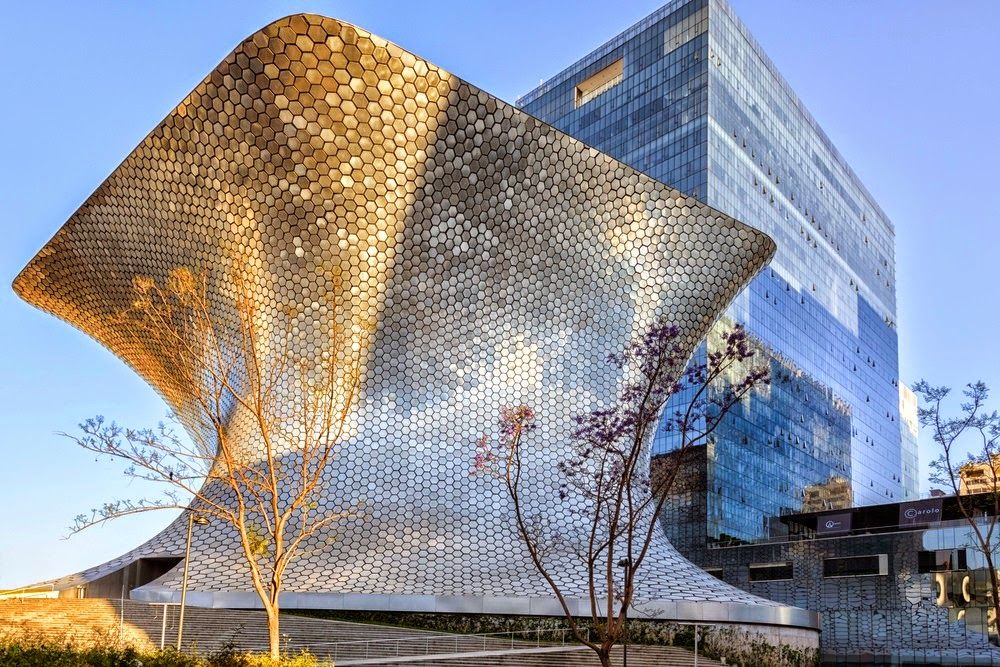
Nuevo Polanco was once a critical industrial zone on the outskirts of Mexico City. However, it’s gone through a dramatic transformation in recent years.
As a result, it’s now an amalgam of two periods. On one side, you’ll find modern offices and residential towers. And on the other are the old factories and warehouses. But in the middle of this transitional chaos rises a monumental construction.
That’s Museo Soumaya, a representation of parametric power in all its glory.
The exterior design of the building resembles an extra-terrestrial monument. Its asymmetrical construction defies all traditional architectural principles. It’s devoid of any windows or openings on the sides, which adds a mysterious touch.
However, the flat roof at the top of the building absorbs plenty of natural daylight. So much so that the sun illuminates the interior during the day.
Inside the building are six completely different levels. All these were made possible through the marriage of complex systems and natural laws.
The aluminium facade covers the building’s curvy skeleton, which consists of 28 steel columns of distinctive shapes and diameters. All of these add stability and convenience to 60,000 square feet of exhibition space.
Building #2 – Walt Disney Concert Hall
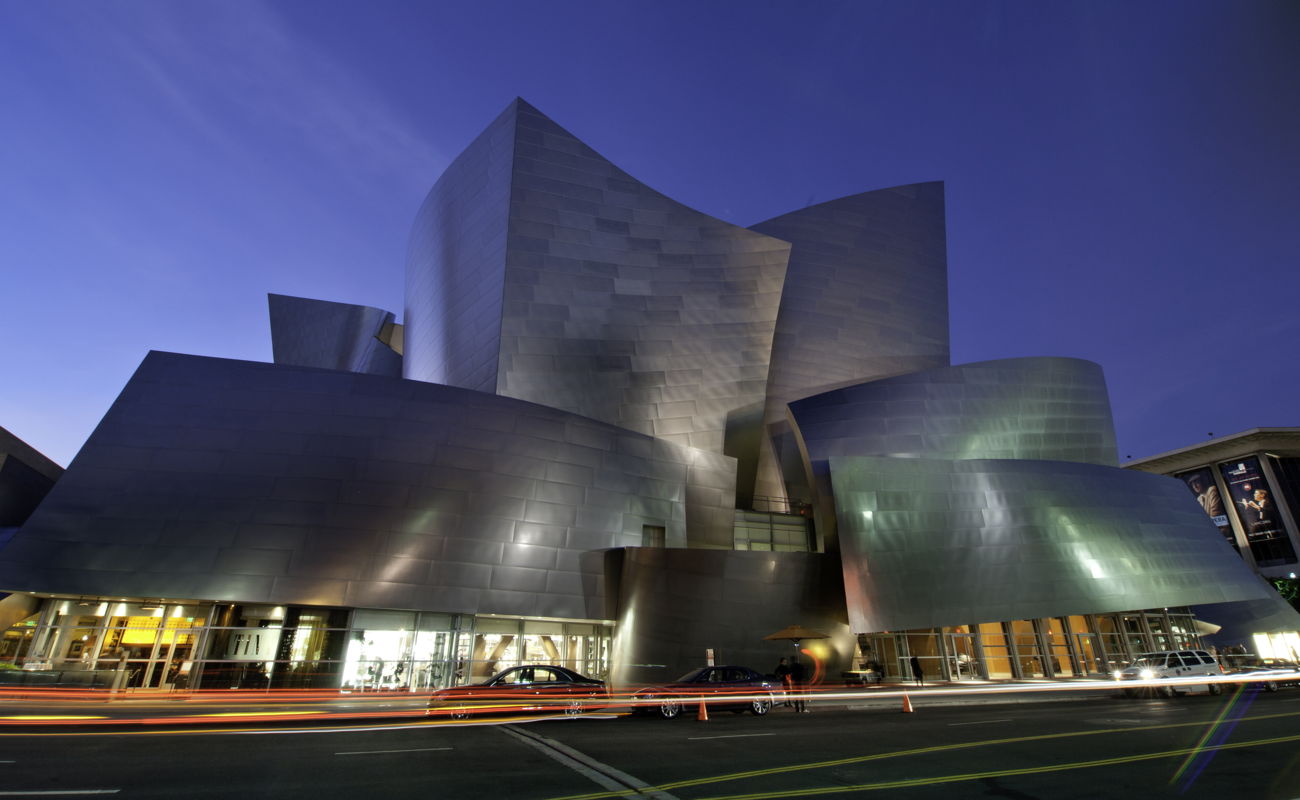
Although parametric design picked up pace in earnest just recently, the first experiments with it came at the dawn of the 21st century.
Did you know that the Walt Disney Concert Hall in Los Angeles was one of the first parametrically designed buildings?
Frank Gehry designed the building using a variety of techniques.
He combined sketches and paper models to imagine the exterior. He further imagined different variations of asymmetrical forms blending into a compact shape. Also, it represents musical movement and the dynamism of the City of Angels.
However, he also had to use a parametric technique to make the structure a reality. Thanks to computer modelling, he found balance in the lopsided entropy of his angles.
The technique was especially invaluable in the design of the interior. Gehry cooperated with Minoru Nagata, an acoustic engineer of the highest repute, to maximize the grand hall’s acoustic potential.
The two of them first created a 1:10 scale model of the hall to tweak the necessary acoustic base. Then, they proceeded to scale both space and material accordingly. Parametric design helped to achieve the resultant acoustical clarity.
The bent ceiling and overall curved construction combine to produce the best possible acoustic response.
Building #3 – Beijing National Aquatics Centre
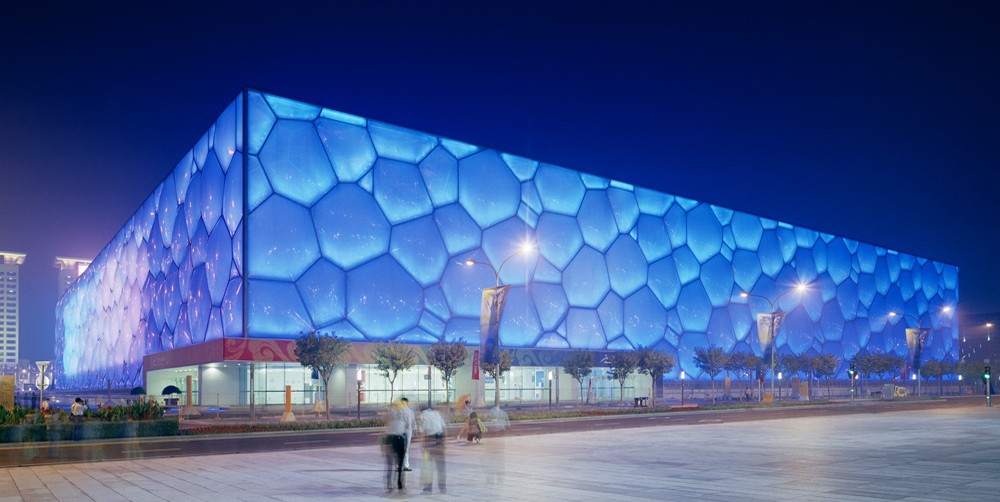
This structure should be familiar to those who followed the 2008 Beijing Summer Olympics.
You may know it better as the Water Cube, which hosted the event’s aquatic competitions.
The Aquatics Centre is a unique parametric structure. The core of the design consists of square shapes, conforming to traditional Chinese architecture. Modern design, however, overlays these cultural ties, as the exterior’s facade consists of square-shaped water bubbles that resemble a web.
The Beijing National Stadium stands next to the Aquatics Centre. This circular parametric wonder forms a yin-yang contrast with the cubic sports venue.
The Water Cube shows off all of the advantages of parametricism. It blends traditional styles with modern design methods, making it both a landmark and a functional building.
Building #4 – Canton Tower
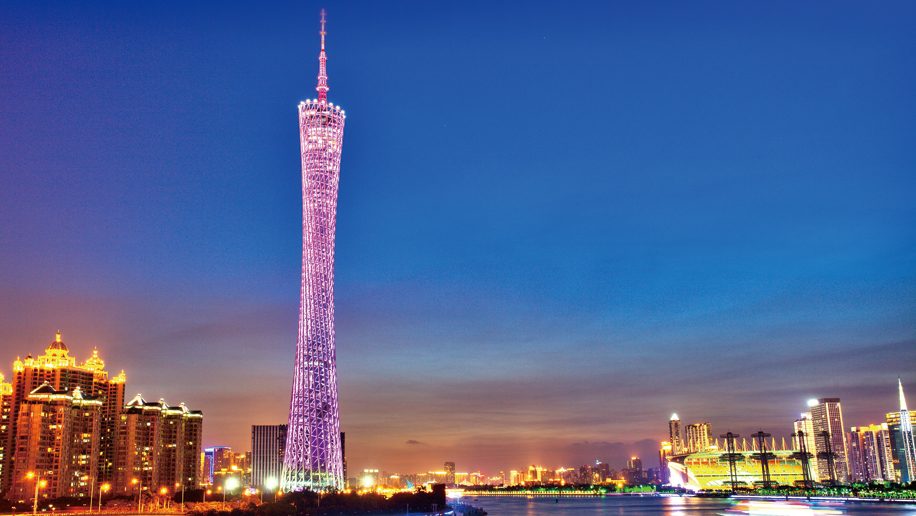
The Canton Tower in Guangzhou was the world’s first-ever parametric TV tower.
There was a plan to erect a building to coincide with the 2010 Asian Games, and at the same time for the tower was to display the city’s progressive trend. And the idea was to create a funky structure that would serve multiple functions.
This thin structure indeed manages to fit multiple purposes. It includes conference rooms and exhibition spaces, and on top of that, tourists can enjoy the cinema and observation spots.
And it’s mostly thanks to parametricism, which provides an extremely effective design of space.
Building #5 – Burnham Pavilion
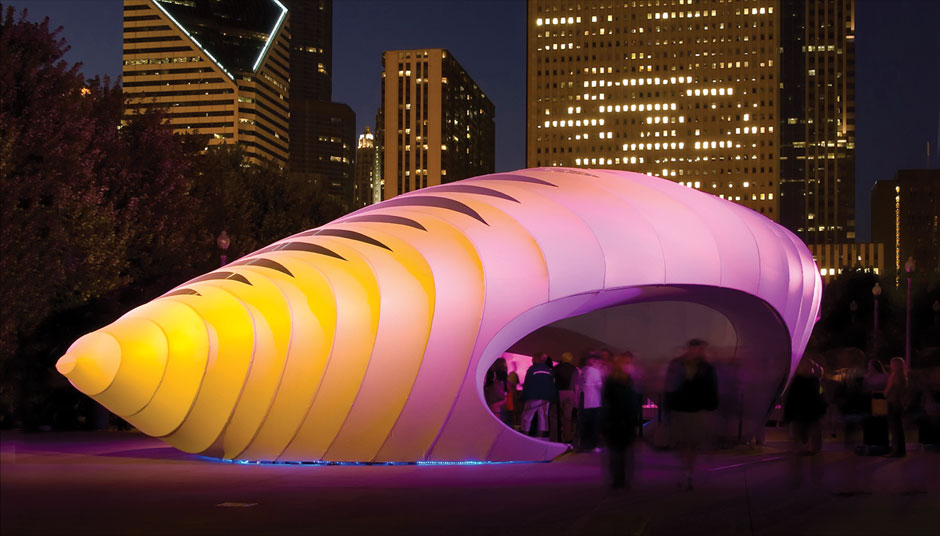
The Burnham Pavilion is considerably smaller than the other buildings on the list. But there’s no doubt it deserves its place among the best parametric structures.
This small cocoon sculpture in Chicago received critical acclaim for its originality. Famous architect Zaha Hadid made use of parametricism to repeat a single-sectioned profile several times over, with each layer a bit larger in scale.
The result was a magnificent canopy over a cavernous interior. Because of this, some of the visitors aptly described it as a camping tent from the future.
A fabric shell and aluminium ribs wrap around the construction. Inside the structure, a play of colourful lights produces a light show at night. But any given moment, one may get the sense that the pavilion is something out of this world.
It’s a beautiful testament to the unpredictable future of architecture.
Parametricism May Be the Future
Judging by recent trends, parametric design is still in the warm-up phase.
Some believe that it relies too much on technology, potentially making human labour redundant. However, all of the above examples prove the opposite.
They all have their artistic imagination and cultural uniqueness. On top of that, they combine it all with great effectiveness. But these are not possible without any human intervention.
Both architects and property developers can use parametric tools to their advantage. That’s why you should check out parametricism for yourself.
Software platforms like Archistar allow you to generate your first parametric designs. Test out how it works on an empty plot of land. Or, use it to design a service building.
There’s nothing to stop you from testing out the platform and see for yourself.
Get started for free: [https://www.archistar.ai/] to experience the property platform of the future.
